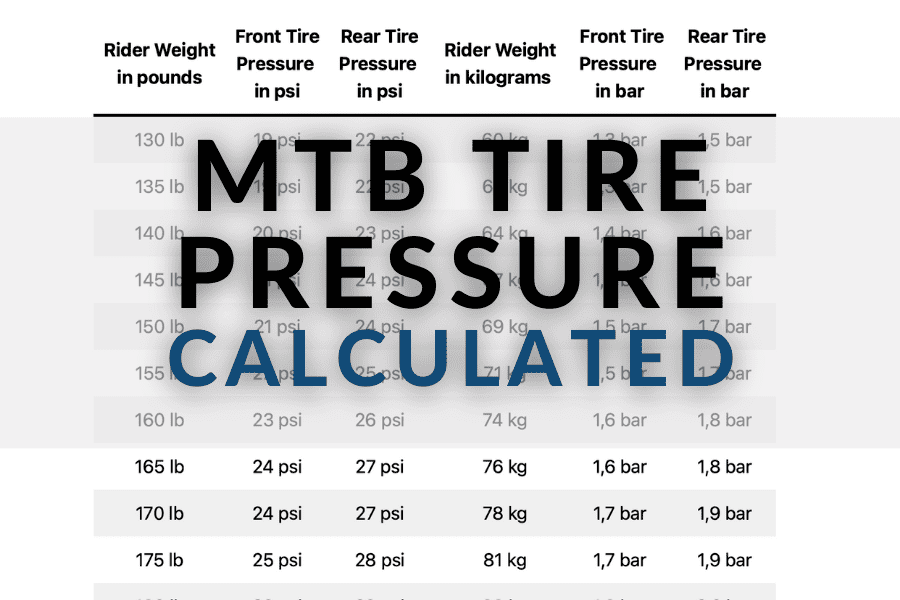
But after day one, it became indispensable. I initially thought that spending $40 on a pressure gauge was excessive. To take reasonably accurate measurements you need reasonably accurate tools.


If there’s too much casing tension, the bike and rider are lifted instead of the tire deforming, again costing energy. Too little casing tension and the tire feels squirmy, lacks feedback, costs energy, will likely burp air out, and could catastrophically damage your rim. Second, the tire can follow and level the contours of the ground better.” More tread area is in contact with the ground. The trick with mountain biking - or any riding on a varied surface - is to find the tire pressure sweet spot for your weight.Īccording to Vorm Walde, as casing tension decreases, “lower casing tension lets the tire deform more under the same load.
#Mtb tire psi how to
How to Find the Tire Pressure ‘Sweet Spot’
#Mtb tire psi iso
Most of us lack an ASTM or ISO lab to test casing tensions, but we can draw parallels with the amount of pressure that reads on tire gauges. It turns out that this conversation is less about tire pressure and more about casing tension. “For the same tire size, we need to pick different inflation pressure for different rider weights.” “A light rider gets away with lower pressure for the same firm ride feel a heavy rider would need a couple extra pump strokes for,” he said. Lower pressure equals lower tension, and higher pressure equals higher tension - and therefore a greater load-carrying capacity. Vorm Walde said riders essentially dial in spring preload by adjusting tire inflation. “And because its walls are a flexible membrane, it works like an air spring and provides suspension.” “A tire casing is basically a canister,” Vorm Walde said. As the former head of Research and Development for Continental Tires, and now Specialized’s Director of Tires and Tubes in Germany, Vorm Walde and his team are constantly tweaking commercial stables of tires.Īccording to Vorm Walde, the function of a pneumatic tire is to “carry the load of bike and rider provide comfort and adherence to the ground.”īy adjusting air pressure, riders influence the tire casing more than any other bike component.

And that bit of due diligence can improve anyone’s day on the trails.įew people on the planet know more about bicycle tires than Wolf Vorm Walde. But with time, tools, and some know-how, you can dial in your tires for the perfect ride. There are several factors that go into an ideal pressure setup. The end result was a set of tires that performed optimally more often than not. This sent me down a rabbit hole, meticulously tweaking tire pressure for a given ride. So in an effort to replicate that sensation on every ride, I invested in a digital pressure gauge. I enjoyed low rolling resistance, great bump absorption, and grip when needed. There were times when I felt my pressures were spot on. My quest for the most efficient tire pressure started when I spent more time on dirt than pavement. You give up a bit here to gain a bit there. The range of forces applied to tires and the variety of substrates you ride over make any tire pressure level a banker’s scale.

We spoke with one of the world’s foremost tire experts to learn how to get the most from your treads. Despite your best efforts, the most efficient mountain bike tire pressure for you will be a compromise.


 0 kommentar(er)
0 kommentar(er)
